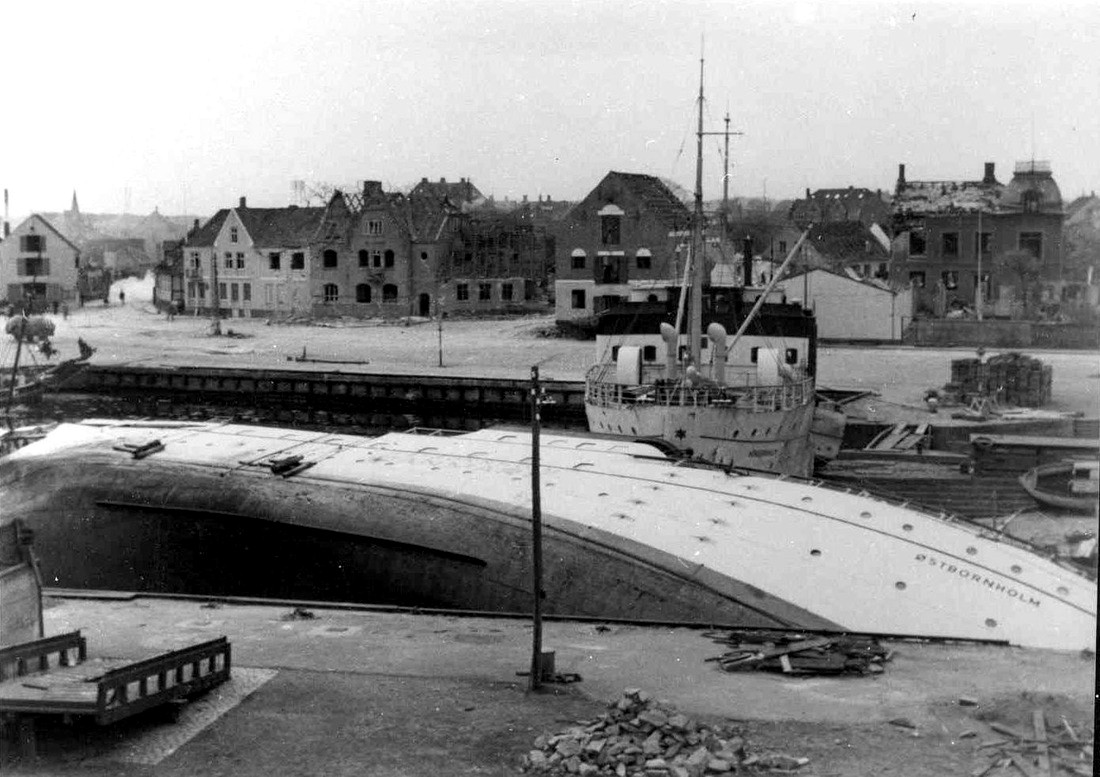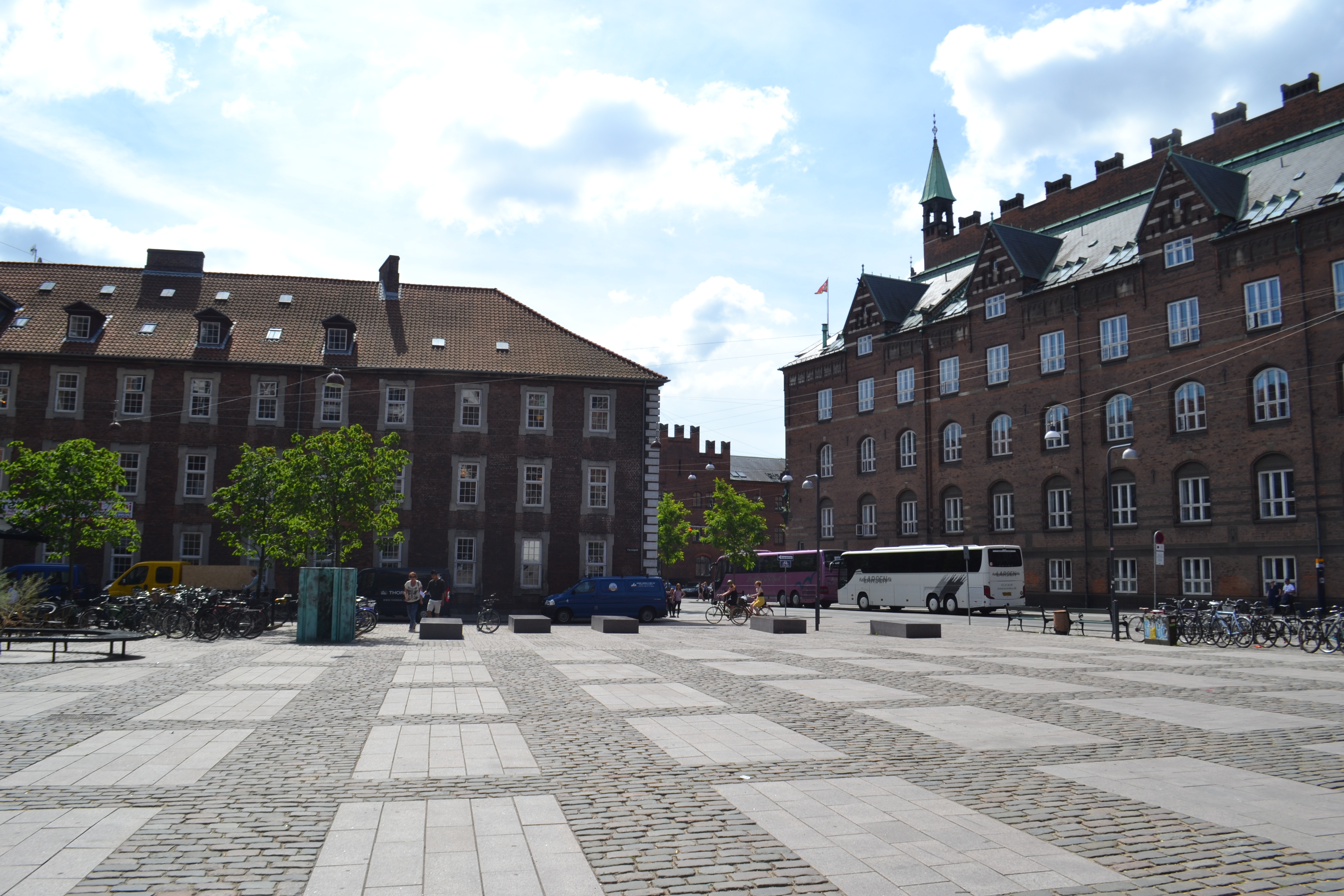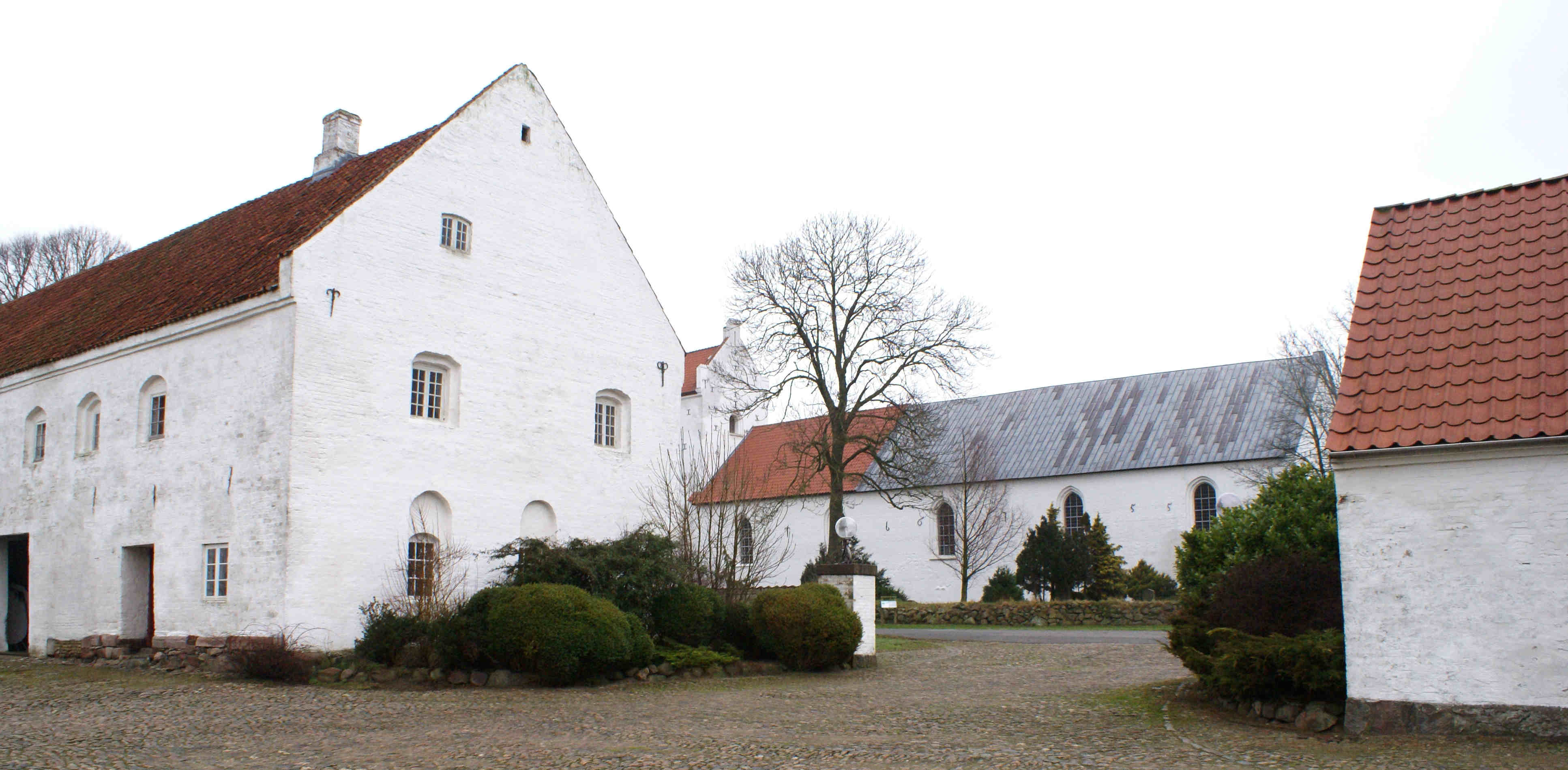|
Kvæsthusgade 5
Kvæsthusgade 5 is a historic property in Kvæsthusgade, a short street between the Nyhavn canal and Sankt Annæ Plads, in central Copenhagen, Denmark. The building is listed in ht Danish registry of protected buildings and places. Notable former residents include the military officer Christian de Meza, composer Niels Gade. painter Anna Petersen and art historian Troels Troels-Lund. History 18th century The site was part of a larger property in the late 17th century. This property was listed as No. 22 in St. Ann's East Quarter in Copenhagen's first cadastre of 1689. The present building on the site was constructed with two storeys over a walk-out basement in 1736 for royal cellarman (''vinkyper'') Ph. Jacob Zalathe. It was heightened by two floors in 1845. The property was listed as No. 41 in the new cadastre of 1756 and was then owned by one ''kommerceråd'' Courtenne. 19th century The property was home to a total of 38 residents in four households at the time of the 1801 cen ... [...More Info...] [...Related Items...] OR: [Wikipedia] [Google] [Baidu] |
Copenhagen
Copenhagen ( or .; da, København ) is the capital and most populous city of Denmark, with a proper population of around 815.000 in the last quarter of 2022; and some 1.370,000 in the urban area; and the wider Copenhagen metropolitan area has 2,057,142 people. Copenhagen is on the islands of Zealand and Amager, separated from Malmö, Sweden, by the Øresund strait. The Øresund Bridge connects the two cities by rail and road. Originally a Viking fishing village established in the 10th century in the vicinity of what is now Gammel Strand, Copenhagen became the capital of Denmark in the early 15th century. Beginning in the 17th century, it consolidated its position as a regional centre of power with its institutions, defences, and armed forces. During the Renaissance the city served as the de facto capital of the Kalmar Union, being the seat of monarchy, governing the majority of the present day Nordic region in a personal union with Sweden and Norway ruled by the Danis ... [...More Info...] [...Related Items...] OR: [Wikipedia] [Google] [Baidu] |
Carsten Henrichsen
Carsten Henrichsen (23 September 1824 - 30 April -1897) was a Danish landscape painter. Biography Henrichsen was born into a working-class family in Copenhagen in 1824. He at the Royal Danish Academy of Fine Arts from 1840 to 1845 and took drawing lessons with Frederik Ferdinand Helsted in 1845–40. From the late 1840s, he created vast number of paintings from Copenhagen and North Zealand. He received the Neuhausen Award in 1855 and a grant from the Academy in 1858. Selected works * ''Broen over Stadsgraven ved Nørreport'' (1848, Øregaard Museum) * ''Udsigt fra Fortunen over Bernstorff mod Gentofte og København'' (1853) * ''Prospekt af Roskilde med Domkirken'' (1857, Frederiksborg Museum) * ''Amagerport'' (1860, Museum of Copenhagen) * ''Ved Frihedsstøtten'' (c. 1860, Museum of Copenhagen) * ''Strandgade, Sandvig'' (1872, Bornholms Kunstmuseum) * ''Kobberdammen ved Hellebæk'' (1878, Aarhus Kunstmuseum, Roskilde Museum, Vejle Kunstmuseum) Image gallery Image:Car ... [...More Info...] [...Related Items...] OR: [Wikipedia] [Google] [Baidu] |
Dentil
A dentil (from Lat. ''dens'', a tooth) is a small block used as a repeating ornament in the bedmould of a cornice. Dentils are found in ancient Greek and Roman architecture, and also in later styles such as Neoclassical, Federal, Georgian Revival, Greek Revival, Renaissance Revival, Second Empire, and Beaux-Arts architecture. Dentillation refers to use of a course of dentils. History Origin The Roman architect Vitruvius (iv. 2) states that the dentil represents the end of a rafter (''asser''). It occurs in its most pronounced form in the Ionic temples of Asia Minor, the Lycian tombs and the porticoes and tombs of Persia, where it clearly represents the reproduction in stone of timber construction. The earliest example is found carved into the rock of the tomb of Darius, c. 500 BC, reproducing the portico of his palace. Its first employment in Athens is in the cornice of the caryatid portico of the Erechtheum (480 BC). When subsequently introduced into the bed-mould of the corn ... [...More Info...] [...Related Items...] OR: [Wikipedia] [Google] [Baidu] |
Cornice
In architecture, a cornice (from the Italian ''cornice'' meaning "ledge") is generally any horizontal decorative moulding that crowns a building or furniture element—for example, the cornice over a door or window, around the top edge of a pedestal, or along the top of an interior wall. A simple cornice may be formed just with a crown, as in crown moulding atop an interior wall or above kitchen cabinets or a bookcase. A projecting cornice on a building has the function of throwing rainwater free of its walls. In residential building practice, this function is handled by projecting gable ends, roof eaves and gutters. However, house eaves may also be called "cornices" if they are finished with decorative moulding. In this sense, while most cornices are also eaves (overhanging the sides of the building), not all eaves are usually considered cornices. Eaves are primarily functional and not necessarily decorative, while cornices have a decorative aspect. A building's projecti ... [...More Info...] [...Related Items...] OR: [Wikipedia] [Google] [Baidu] |
Nexø
Nexø, sometimes spelled Neksø ( sv, Nexö), is a town on the east coast of the Baltic island of Bornholm, Denmark. With a population of 3,668 (as of 1 January 2022), it is the second largest town, as well as the largest fishing port on the island. Fishing was previously the mainstay of the town's economy. Nexø is also the site of a distillery (Bornholmske Spiritfabrik ApS) and a mustard factory (Bornholmersennep ApS). The town is also a port of call for the passenger ferries linking Bornholm with Kołobrzeg in Poland. Dueodde, the largest beach on Bornholm, is located south of Nexø, in the southeastern corner of the island. Etymology "Nexø" is possibly a combination of the Old Norse elements "nøkke", meaning Nix or water spirit, and "sæ" (sea). It was first documented in 1346 as ''Nexe''. [...More Info...] [...Related Items...] OR: [Wikipedia] [Google] [Baidu] |
Corbel
In architecture, a corbel is a structural piece of stone, wood or metal jutting from a wall to carry a superincumbent weight, a type of bracket. A corbel is a solid piece of material in the wall, whereas a console is a piece applied to the structure. A piece of timber projecting in the same way was called a "tassel" or a "bragger" in England. The technique of corbelling, where rows of corbels deeply keyed inside a wall support a projecting wall or parapet, has been used since Neolithic (New Stone Age) times. It is common in medieval architecture and in the Scottish baronial style as well as in the vocabulary of classical architecture, such as the modillions of a Corinthian cornice. The corbel arch and corbel vault use the technique systematically to make openings in walls and to form ceilings. These are found in the early architecture of most cultures, from Eurasia to Pre-Columbian architecture. A console is more specifically an "S"-shaped scroll bracket in the classic ... [...More Info...] [...Related Items...] OR: [Wikipedia] [Google] [Baidu] |
Vester Voldgade
Vester Voldgade ( lit. "West Rampart Street") is a street in Copenhagen, Denmark which runs from Jarmers Plads to the waterfront between Frederiksholms Kanal and Langebro, passing the City Hall Square on the way. Together with Nørre Voldgade and Øster Voldgade it forms a traffic artery which arches around the Zealand side of central Copenhagen all the way to Kastellet (at Oslo Plads on the coast north of the city centre. The three streets follow the course of Copenhagen's long gone Bastioned Fortification Ring and thus marks the transition between the Old Town and the new neighbourhoods that developed after the fortifications were removed in the second half of the 19th century. History Vester Voldgade was originally a narrow alley which ran along the inner margin of Copenhagen's West Rampart, part of the Bastioned Fortification Ring which enclosed Copenhagen. The city's haymarket was located at the site of the current City Hall Square until the New Haymarket was inau ... [...More Info...] [...Related Items...] OR: [Wikipedia] [Google] [Baidu] |
Niels W
Niels is a male given name, equivalent to Nicholas, which is common in Denmark, Belgium, Norway (formerly) and the Netherlands. The Norwegian and Swedish variant is Nils. The name is a developed short form of Nicholas or Greek Nicolaos after Saint Nicholas. Its pet form is Nisse, and female variants are Nielsine, Nielsina, and Nielsa. Niels may refer to: People *Niels, King of Denmark (1065–1134) *Niels, Count of Halland (died 1218) * Niels Aagaard (1612–1657), Danish poet *Niels Aall (1769–1854), Norwegian businessman and politician *Niels Henrik Abel (1802–1829), Norwegian mathematician *Niels Arestrup (born 1949), French actor *Niels Viggo Bentzon (1919–2000), Danish composer and pianist *Niels Bohr (1885–1962), Danish physicist and Nobel Prize recipient *Niels Busk (born 1942), Danish politician *Niels Ebbesen (died 1340), Danish squire and national hero *Niels Feijen (born 1977), Dutch pool player *Niels Ferguson (born 1965), Dutch cryptographer *Niels Friis (di ... [...More Info...] [...Related Items...] OR: [Wikipedia] [Google] [Baidu] |
Vrejlev Priory
Vrejlev Priory (''Vrejlev Kloster'') is a former Danish priory which dates back to the 13th century. The priory located at Vrejlev, near Vrå, Region Nordjylland, Denmark. Between 1165 and the Protestant Reformation, it was operated as a Premonstratensian nunnery. History Vrejlev Priory was founded as a daughter house by canons from Børglum Abbey about 1165. It was small and built out of granite blocks. After a catastrophic fire in 1200 which destroyed the entire premises, it was decided to rebuild. 12 residential cells were built into the new north range for the Premonstratensian nuns who were to live in the rebuilt priory. Another range contained the refectory and cellars, and a third range housed lay sisters, usually unmarried young women or widows whose families paid for the privilege of living alongside the nuns. A cloister completed the four-sided complex. After the fire in 1200, the church was expanded into a three aisled Romanesque architecture, Romanesque structure ... [...More Info...] [...Related Items...] OR: [Wikipedia] [Google] [Baidu] |
Kvæsthusgade 5 )ca
Kvæsthusgade is a short street in the Nyhavn Quarter of central Copenhagen, Denmark. It runs from the mouth of the Nyhavn canal in the south to Ofelia Plads in the north. The rear side of the Royal Danish Playhouse dominates the east side of the street. The Zinn House at No. 3 and the neighbouring building at No. 5 are both listed in the Danish registry of protected buildings and places. History The street takes its name after the Kvæsthus, a military hospital, which relocated to the site in 1680. It is known that a hospital for boatsmen was founded in 1618 and it was then most likely situated at the Church of Holmen. It was moved to Gothersgade in 1628 and again in 1658 to Sejlhuset at Bremerholm. In 1668, the hospital moved to Børnehuset in Christianshavn and in 1675 to Guldhuset in Rigensgade. The name Kvæsthus was introduced with the inauguration of the new building for the institution at the corner of present day Kvæsthusgade and Sankt Annæ Plads in 1685. ... [...More Info...] [...Related Items...] OR: [Wikipedia] [Google] [Baidu] |
Møn
Møn () is an island in south-eastern Denmark. Until 1 January 2007, it was a municipality in its own right but it is now part of the municipality of Vordingborg, after merging with the former municipalities of Langebæk, Præstø, and Vordingborg. This has created a municipality with an area of and a total population of 46,307 (2005). It belongs to the Region Sjælland ("Zealand Region"). Møn is one of Denmark's most popular destinations for tourists with its white chalk cliffs, countryside, sandy beaches and the market town of Stege. In June 2017, UNESCO designated Møn as Denmark's first biosphere reserve, consisting of "a series of islands and islets in the southern Baltic Sea, over approximately 45,118 hectares (131,890 acres). Its landscapes include woodlands, grasslands, meadows, wetlands, coastal areas, ponds and steep hills." Location Møn is located just off the south-eastern tip of Zealand from which it is separated by the waters of the ''Hølen'' strait between K ... [...More Info...] [...Related Items...] OR: [Wikipedia] [Google] [Baidu] |



